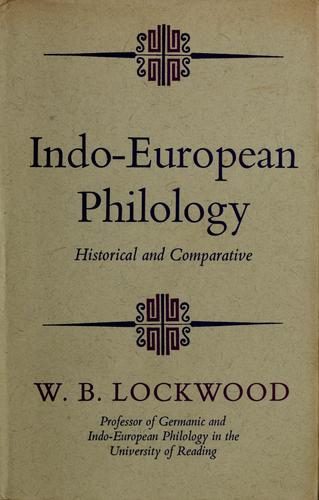|
John F. Sowa
John Florian Sowa (born 1940) is an American computer scientist, an expert in artificial intelligence and computer design, and the inventor of conceptual graphs. Biography Sowa received a BS in mathematics from Massachusetts Institute of Technology in 1962, an MA in applied mathematics from Harvard University in 1966, and a PhD in computer science from the Vrije Universiteit Brussel in 1999 with a dissertation titled "Knowledge Representation: Logical, Philosophical, and Computational Foundations". Sowa spent most of his professional career at IBM, starting in 1962 at IBM's applied mathematics group. Over the decades he has researched and developed emerging fields of computer science from compilers, programming languages, and system architectureJohn F. Sowa and John Zachman (1992)"Extending and Formalizing the Framework for Information Systems Architecture"In: ''IBM Systems Journal'', Vol 31, no.3, 1992. p. 590-616. to artificial intelligence and knowledge representation. In the ... [...More Info...] [...Related Items...] OR: [Wikipedia] [Google] [Baidu] |
Conceptual Graph
A conceptual graph (CG) is a formalism for knowledge representation. In the first published paper on CGs, John F. Sowa used them to represent the conceptual schemas used in database systems. The first book on CGs applied them to a wide range of topics in artificial intelligence, computer science, and cognitive science. Research branches Since 1984, the model has been developed along three main directions: a graphical interface for first-order logic, a diagrammatic calculus of logics, and a graph-based knowledge representation and reasoning model. Graphical interface for first-order logic In this approach, a formula in first-order logic (predicate calculus) is represented by a labeled graph. A linear notation, called the Conceptual Graph Interchange Format (CGIF), has been standardized in the ISO standard for common logic. The diagram above is an example of the ''display form'' for a conceptual graph. Each box is called a ''concept node'', and each oval is called a ''re ... [...More Info...] [...Related Items...] OR: [Wikipedia] [Google] [Baidu] |
Knowledge Representation
Knowledge representation (KR) aims to model information in a structured manner to formally represent it as knowledge in knowledge-based systems whereas knowledge representation and reasoning (KRR, KR&R, or KR²) also aims to understand, reason, and interpret knowledge. KRR is widely used in the field of artificial intelligence (AI) with the goal to represent information about the world in a form that a computer system can use to solve complex tasks, such as diagnosing a medical condition or having a natural-language dialog. KR incorporates findings from psychology about how humans solve problems and represent knowledge, in order to design formalisms that make complex systems easier to design and build. KRR also incorporates findings from logic to automate various kinds of ''reasoning''. Traditional KRR focuses more on the declarative representation of knowledge. Related knowledge representation formalisms mainly include vocabularies, thesaurus, semantic networks, axiom system ... [...More Info...] [...Related Items...] OR: [Wikipedia] [Google] [Baidu] |
Expert Systems
In artificial intelligence (AI), an expert system is a computer system emulating the decision-making ability of a human expert. Expert systems are designed to solve complex problems by Automated reasoning system, reasoning through bodies of knowledge, represented mainly as Rule-based system, if–then rules rather than through conventional procedural programming code. Expert systems were among the first truly successful forms of AI software. They were created in the 1970s and then proliferated in the 1980s, being then widely regarded as the future of AI — before the advent of successful artificial neural networks. An expert system is divided into two subsystems: 1) a ''knowledge base'', which represents facts and rules; and 2) an ''inference engine'', which applies the rules to the known facts to deduce new facts, and can include explaining and debugging abilities. History Early development Soon after the dawn of modern computers in the late 1940s and early 1950s, researche ... [...More Info...] [...Related Items...] OR: [Wikipedia] [Google] [Baidu] |
Croton-on-Hudson, New York
Croton-on-Hudson ( ) is a administrative divisions of New York#Village, village in Westchester County, New York, Westchester County, New York (state), New York, United States. The population was 8,327 at the 2020 United States census over 8,070 at the 2010 census. It is located in the administrative divisions of New York#Town, town of Cortlandt, New York, Cortlandt as part of New York City's northern suburbs. The village was incorporated in 1898. History Humans have lived in the area that would become Croton-on-Hudson since at least 7000 BC. The Wappinger#Kitchawank, Kitchawanc tribe, part of the Wappinger Confederacy of the Algonquian peoples, signed a peace treaty with the newly arriving Dutch people at Croton Point in 1645, now commemorated by a plaque in Croton Point Park, the park there. Stephanus van Cortlandt began acquiring land in the area to build a manor in 1677, the same year he became mayor of New York City. It was granted by royal patent in 1697 as the Manor of Cortl ... [...More Info...] [...Related Items...] OR: [Wikipedia] [Google] [Baidu] |
Philologist
Philology () is the study of language in oral and written historical sources. It is the intersection of textual criticism, literary criticism, history, and linguistics with strong ties to etymology. Philology is also defined as the study of literary texts and oral and written records, the establishment of their authenticity and their original form, and the determination of their meaning. A person who pursues this kind of study is known as a philologist. In older usage, especially British, philology is more general, covering comparative and historical linguistics. Classical philology studies classical languages. Classical philology principally originated from the Library of Pergamum and the Library of Alexandria around the fourth century BC, continued by Greeks and Romans throughout the Roman and Byzantine Empire. It was eventually resumed by European scholars of the Renaissance, where it was soon joined by philologies of other European ( Romance, Germanic, Celtic, ... [...More Info...] [...Related Items...] OR: [Wikipedia] [Google] [Baidu] |
Natural Language Understanding
Natural language understanding (NLU) or natural language interpretation (NLI) is a subset of natural language processing in artificial intelligence that deals with machine reading comprehension. NLU has been considered an AI-hard problem. There is considerable commercial interest in the field because of its application to automated reasoning, machine translation, question answering, news-gathering, text categorization, voice-activation, archiving, and large-scale content analysis. History The program STUDENT, written in 1964 by Daniel Bobrow for his PhD dissertation at MIT, is one of the earliest known attempts at NLU by a computer. Eight years after John McCarthy coined the term artificial intelligence, Bobrow's dissertation (titled ''Natural Language Input for a Computer Problem Solving System'') showed how a computer could understand simple natural language input to solve algebra word problems. A year later, in 1965, Joseph Weizenbaum at MIT wrote ELIZA, an interactiv ... [...More Info...] [...Related Items...] OR: [Wikipedia] [Google] [Baidu] |
Ontology
Ontology is the philosophical study of existence, being. It is traditionally understood as the subdiscipline of metaphysics focused on the most general features of reality. As one of the most fundamental concepts, being encompasses all of reality and every entity within it. To articulate the basic structure of being, ontology examines the commonalities among all things and investigates their classification into basic types, such as the Theory of categories, categories of particulars and Universal (metaphysics), universals. Particulars are unique, non-repeatable entities, such as the person Socrates, whereas universals are general, repeatable entities, like the color ''green''. Another distinction exists between Abstract and concrete, concrete objects existing in space and time, such as a tree, and abstract objects existing outside space and time, like the number 7. Systems of categories aim to provide a comprehensive inventory of reality by employing categories such as Substance t ... [...More Info...] [...Related Items...] OR: [Wikipedia] [Google] [Baidu] |
Database
In computing, a database is an organized collection of data or a type of data store based on the use of a database management system (DBMS), the software that interacts with end users, applications, and the database itself to capture and analyze the data. The DBMS additionally encompasses the core facilities provided to administer the database. The sum total of the database, the DBMS and the associated applications can be referred to as a database system. Often the term "database" is also used loosely to refer to any of the DBMS, the database system or an application associated with the database. Before digital storage and retrieval of data have become widespread, index cards were used for data storage in a wide range of applications and environments: in the home to record and store recipes, shopping lists, contact information and other organizational data; in business to record presentation notes, project research and notes, and contact information; in schools as flash c ... [...More Info...] [...Related Items...] OR: [Wikipedia] [Google] [Baidu] |
Data-mining
Data mining is the process of extracting and finding patterns in massive data sets involving methods at the intersection of machine learning, statistics, and database systems. Data mining is an interdisciplinary subfield of computer science and statistics with an overall goal of extracting information (with intelligent methods) from a data set and transforming the information into a comprehensible structure for further use. Data mining is the analysis step of the " knowledge discovery in databases" process, or KDD. Aside from the raw analysis step, it also involves database and data management aspects, data pre-processing, model and inference considerations, interestingness metrics, complexity considerations, post-processing of discovered structures, visualization, and online updating. The term "data mining" is a misnomer because the goal is the extraction of patterns and knowledge from large amounts of data, not the extraction (''mining'') of data itself. It also is a buzzwo ... [...More Info...] [...Related Items...] OR: [Wikipedia] [Google] [Baidu] |
Arun K
Arun may refer to: People * Arun (given name) ** Arun (actor), Indian actor * Arun (surname) Places * Arun, Badakhshan, Afghanistan * Arun (England), a region of southeasthern England ** Arun District, West Sussex, England * Arun Banner, an administrative division (banner) of Inner Mongolia, China * Arun, Sumatra, a vassal state, now in Indonesia * Arun gas field, Sumatra, Indonesia * Aran va Bidgol ('Aran and Bidgol'), Isfahan Province, Iran ** Aran va Bidgol County * Arun rural municipality, Nepal * Wat Arun, a temple in Bangkok, Thailand Rivers and canals * Arun River, China–Nepal * River Arun, in West Sussex, England * Wey and Arun Canal, in the south east of England Other uses * Aruṇa, a god in Hinduism * ''Arun''-class lifeboat * , two ships of the Royal Navy * Arun, a fictional character played by Sachin Pilgaonkar in the Indian films ''Ankhiyon Ke Jharokhon Se'' (1978) and '' Jaana Pehchana'' (2011) See also * * * Aaron (other) Aaron is the ... [...More Info...] [...Related Items...] OR: [Wikipedia] [Google] [Baidu] |
Association For The Advancement Of Artificial Intelligence
The Association for the Advancement of Artificial Intelligence (AAAI) is an international Learned society, scientific society devoted to promote research in, and responsible use of, artificial intelligence. AAAI also aims to increase public understanding of artificial intelligence (AI), improve the teaching and training of AI practitioners, and provide guidance for research planners and funders concerning the importance and potential of current AI developments and future directions. History The organization was founded in 1979 under the name "American Association for Artificial Intelligence" and changed its name in 2007 to "Association for the Advancement of Artificial Intelligence". It has in excess of 4,000 members worldwide. In its early history, the organization was presided over by notable figures in computer science such as Allen Newell, Edward Feigenbaum, Marvin Minsky and John McCarthy (computer scientist), John McCarthy. Since July 2022, Francesca Rossi has been serving ... [...More Info...] [...Related Items...] OR: [Wikipedia] [Google] [Baidu] |
Université Du Québec à Montréal
The (UQAM; ), is a French language, French-language public university, public research university based in Montreal, Quebec, Canada. It is the largest constituent element of the system. UQAM was founded on April 9, 1969, by the government of Quebec, through the merger of the , a fine arts school; the , a classical college; and a number of smaller schools. Although part of the UQ network, UQAM possesses a relative independence which allows it to choose its rector. In the fall of 2018, the university welcomed some 40,738 students, including 3,859 international students from 95 countries, in a total of 310 distinct programs of study, managed by six faculties (Arts, Education, Communication, Political Science and Law, Science and Social science) and one school (Management). It offers Bachelor's degree, Bachelors, Master's degree, Masters, and Doctor of Philosophy, Doctoral degrees. It is one of Montreal's two French-language universities, along with the , and only 1% of its stud ... [...More Info...] [...Related Items...] OR: [Wikipedia] [Google] [Baidu] |




